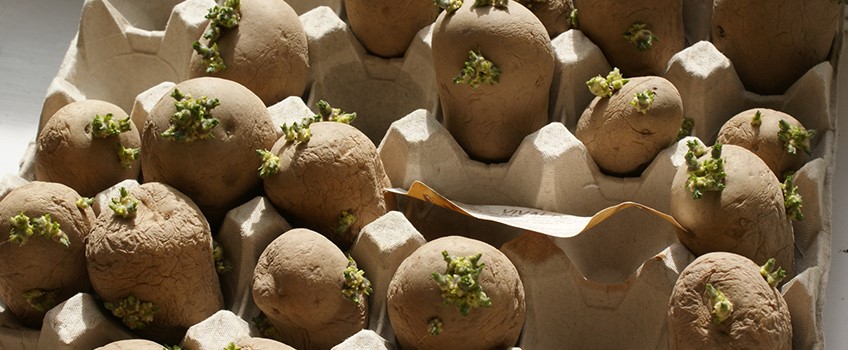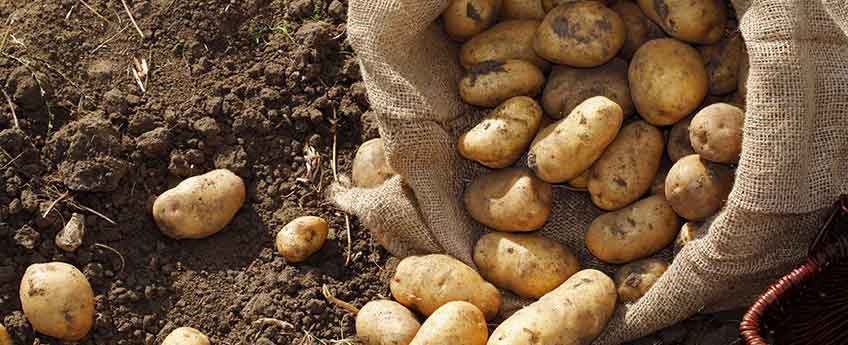Potatoes prefer an open position in full sun on soil that is fertile and well drained. To avoid risk of disease, plant in an area where you haven’t grown potatoes for 2 or more years in a row. In general, potatoes are best grown in multipurpose compost.
Preparing the site
It is best to prepare the site in December, which will allow plenty of time for the soil to settle before planting. It’s important to thoroughly dig over the area and remove any large stones and weeds and add a mixture of organic matter and high potash feed. We recommend Westland’s farmyard manure as well as their Potato and vegetable feed.

Chitting
Most varieties of seed potatoes benefit from being ‘chitted’ before planting. Chitting is the process where you place the seeds in a frost free/bright area and allow them to sprout. You will notice that they will start to ‘Chit’ from one end. This is referred to as the rose end. Place the rose end upwards and the sprouts should get to about an inch long.


Planting
As with most aspects of gardening, the best time to plant potatoes is largely dependent on weather conditions. Dig a trench to a depth of about 10cm (4″) and place the seed potatoes into the trench with the rose end facing upwards. Fill the trench with soil to cover the potatoes. An application of potato fertiliser can be scattered along the top of the trench if required.
First Earlies can generally be planted out from the end of February. The seeds should be placed roughly 12 inches apart with a gap between each row of about 24 inches. You can expect to harvest about 10 weeks after planting.
Second Earlies should be planted out from around mid-March time. The seeds should be placed about 15 inches apart with a gap between the rows of about 30 inches. You can expect to harvest about 13 weeks after planting.
Main crops can be planted from lateMarch. The seeds should be placed 18 inches apart and the rows should have a gap of 30 inches. They can be harvested about 20 weeks after planting.

Aftercare
It is important to ‘earth up’ potato crops as the shoots emerge above ground, to protect them from frosts which blacken the shoots and delay production. Simply draw some soil over the top of the shoots to cover them again.
First early and second early crops particularly require plenty of water during prolonged dry weather especially when tubers are starting to form.
When the stems reach a height of 23cm (9″) above ground they should be earthed up again to prevent tubers near to the soil surface from turning green.





